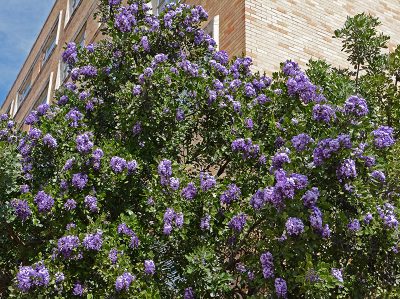Why did my trees lose leaves early?
Certified arborist April Rose, City of Austin Urban Forest Health Coordinator, answers CTG viewer questions about trees losing leaves in drought.
Pine tree losing foliage: Jesse’s pine tree is about eight years old and it’s lost a lot of foliage this year. Is there anything he can do?
Pine trees generally don’t do well in Austin’s alkaline soils. Texas pines are adapted for acidic soil conditions. The Afghan pine is one of the best candidates for our soil, but it is not well acclimated to our rainfall and humidity, making it vulnerable to the fungal infection: Diplodia tip blight. If caught early, Diplodia can be managed through sanitation and fungicide. You can contact a Certified Arborist to help you determine if that is what’s causing the foliage loss and what treatment might be appropriate.
Red oak & others losing leaves: We also got a question from Julia and others about trees dropping their leaves in summer. In Julia’s case, her healthy established red oak lost half its leaves after recent 10 inch rains. Is this a problem?
Many trees, especially red oak and sycamore respond to summer drought and heat by dropping their leaves early.
For many of these trees, the late summer and fall rains will help them restore vigor going into winter, but the stress that caused the early leaf drop initially needs to be considered in future cultural practices.
So to mitigate the stress of summer drought, be sure to maintain three inches of mulch over as much of the root zone as possible, and for established trees, water deeply once a month if there hasn’t been at least an inch of rain.
Pecan tree leaves turning brown: And from Ron in Blanco about his pecan tree. The leaves turned brown in late August. This does not look good, especially because the trees around it appear to be doing okay with the summer heat and drought. I wouldn’t rush to remove this tree. This may also be early leaf drop from the drought and heat, and perhaps the recent rain will help replenish it. If this were my tree I would wait and see how the tree leafs out in the spring. If spring leaves are only sprouting along the branches and not out at the tips then it is dying back and it would be better to remove while it’s safe to climb rather than waiting until it becomes hazardous and brittle.

